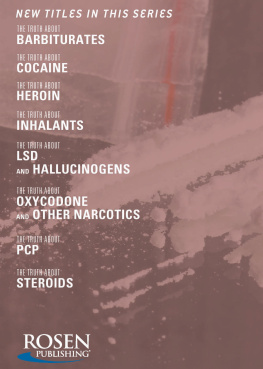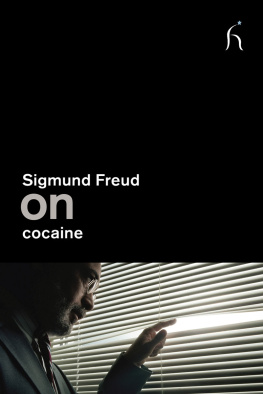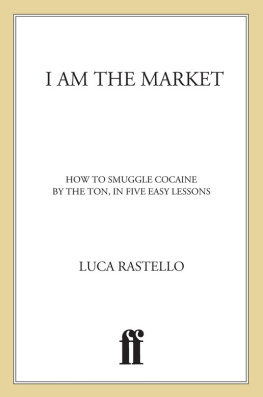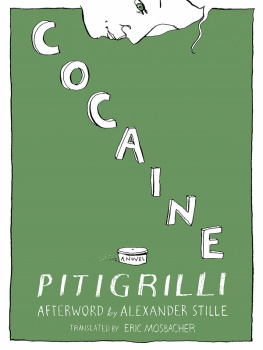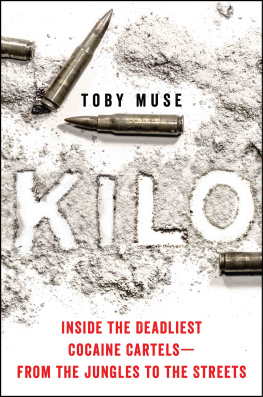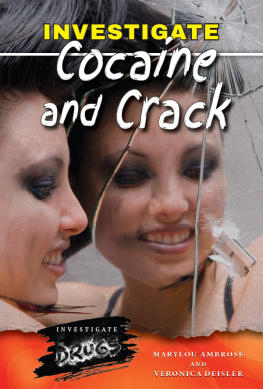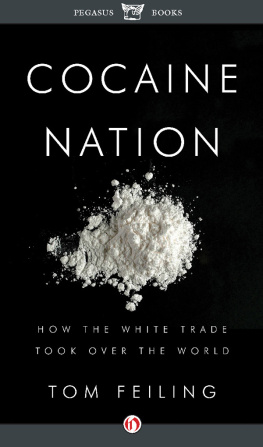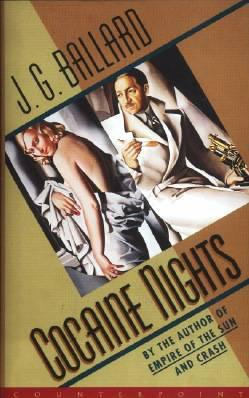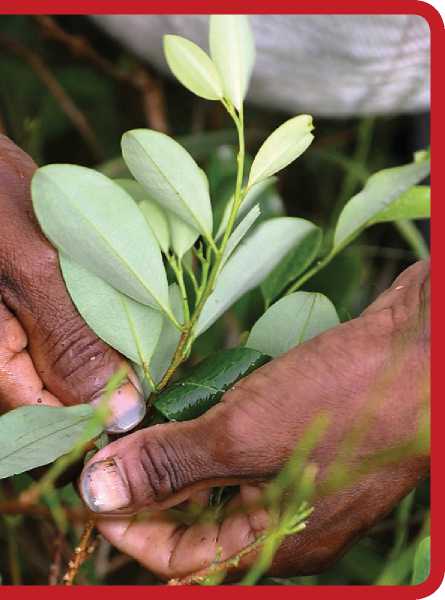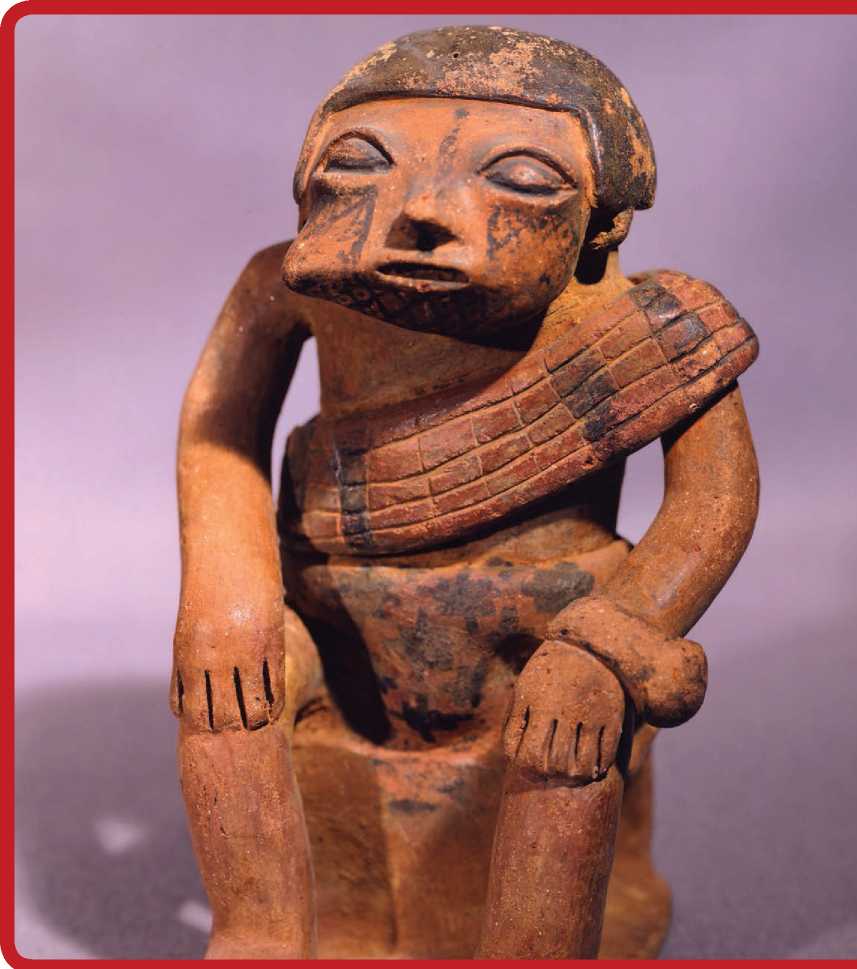

Published in 2014 by The Rosen Publishing Group, Inc.
29 East 21st Street, New York, NY 10010
Copyright 2014 by The Rosen Publishing Group, Inc.
First Edition
All rights reserved. No part of this book may be reproduced in any form without permission in writing from the publisher, except by a reviewer
Library of Congress Cataloging-in-Publication Data
Orr,Tamra.
The truth about cocaine/Tamra B. OrrFirst edition. pages cm.(Drugs & consequences)
Includes bibliographical references and index.
ISBN 978-1-4777-1897-1 (library binding)
1. CocaineHealth aspectsJuvenile literature. 2. CocaineJuvenile literature. 3. Cocaine abuseJuvenile literature. I. Title.
RC568.C6O77 2013 616.86'47dc23
2013017782
Manufactured in the United States of America
CPSIA Compliance Information: Batch #WI4YA: For further information, contact Rosen Publishing, New York, New York, at 1-800-237-9932.
CONTENTS
INTRODUCTION
Y ou already know, as a teenager, that your brain is constantly busy. You are always juggling the details of class assignments, work schedules, and extracurricular demands. At the same time, you are responding to messages on Facebook and Twitter, downloading your favorite music on iTunes, and writing your latest blog post. Your life is full, busy, and occasionally a little crazy.
Although you aren't aware of it, your brain is changing as you juggle all of those tasks. For the first years of your life, that lump of gray matter inside your skull was developing at an astounding rate. Just think how much you learned between birth and kindergarten! While today's computers are amazingand getting more and more sophisticated in what they are capable of doingthey are nothing compared to the speed and complexity of the human brain.
As you emerge into young adulthood, that enormous growth rate slows down as the mature brain you're going to lug around in your head for the rest of your life becomes more fully formed.That shift from youth to adult is a critical time, and if drugs like cocaine are introduced during this period, youand your braincan be in for some real trouble.
When it comes to cocaine, there is both good news and bad news. The good news is that cocaine use among young people is dropping. After hitting a high in the mid-1980s and experiencing a revival in the early 2000s, it has dropped to its lowest rates in years. According to national studies, 1.6 percent of eighth graders have tried cocaine, as well as 2.2 percent of sophomores and 2.7 percent of seniors. Too many young people are still experimenting with cocaine, but these numbers represent a significant decrease.
The bad news? Cocaine damages the teenage brain more than anyone thought. A recent Yale University study has shown that when adolescent brains are exposed to cocaine, the actual shape of the brain's neurons and synapses change shape in an attempt to protect themselves from the drug. The damage that cocaine does to young brains has been demonstrated in a number of studies. The University of Cambridge scanned sixty regular cocaine users and discovered that all of them had abnormal brains because of drug use.
What was different about their brains? The longer they had used cocaine, the less gray matter they had inside their skulls. The loss of this important part of the brain is connected with the overwhelming, obsessive need many users feel to keep taking the drug.
New information about cocaine and the teenage brain is coming out all the time, but some cold, stark facts aren't likely to change. Cocaine is dangerous, expensive, and addictive. It ruins lives, it destroys families, and it can kill you.
W hen you look at the coca leaf, it certainly doesn't look dangerous. It looks like every other type of bush and plant found in tropical climates. The plant has flourished throughout South America for centuries. It grows best in warm, moist climates, usually on the side of hills and other high elevations. The plant can grow as tall as 8 feet (2.4 meters) and produces three harvests a year for many years.
Native South Americans have picked the coca leaf for hundreds of years, never dreaming it would one day be in high demand throughout the world.
The coca leaf is long and oval. It has played a huge part in South American history. There is evidence that these leaves have been used as far back as 3000 BCE. The leaves are actually quite nutritional as they are high in protein, vitamins, calcium, iron, and fiber. However, they also contain between .1 and .9 percent cocaine.
The First Energy Product
In the past, the coca leaf was used to make a paste. The leaf was rolled into a ball and then mixed with some seriously unappetizing-sounding ingredients, such as ground rock, sea-shells, ashes, and spit, and then tucked between the person's cheek and gum. There it sat, a lump in the cheek that was not chewed. Juices from the paste and the person's saliva would trickle down the throat for hours.
Historians have found that the coca plant was sacred to Incan royalty. Only the nobility, priests, and shamans were allowed to use it. They believed the plant was a gift from the sun god Inti and moon mother Moma Quilla. Coca was used for everything from treating the sick or wounded to playing a role in young men's initiation rites. It was even given to people right before they were sacrificed in Incan rituals so that their souls would go to paradise. Messengers who were given the job of running nonstop to deliver important news to other groups of people living far away were often given nothing other than coca leaves to chew or use as a paste. No food, no waterjust coca and a fast journey.
This ancient figure from Colombia is depicted with a clump of cocaine paste stuck in his cheek for an all-day energy boost.
When the Spanish conquistadors conquered the Incan empire, they quickly discovered that slaves worked longer hours if they were given plentiful amounts of coca leaves. In fact, the workers kept going without water or food as long as they had their leaves.
A Perfect Cure-All
By the middle of the nineteenth century, word about this wonderful plant that gave people extra energy reached Europe and North America. While the idea of mashing up the leaves and adding shells, rocks, or ash and then tucking it inside your cheek understandably didn't appeal to many people, they did like the idea of turning the leaves into a drink. In 1863, a chemist concocted Vin Mariani, a mix of wine and cocaine. It was advertised as a cure for pain, as well as an appetite suppressant and treatment for anemia.
This poster, produced more than a century ago, advertises the supposed health benefits of wine mixed with a dash of cocaine.

